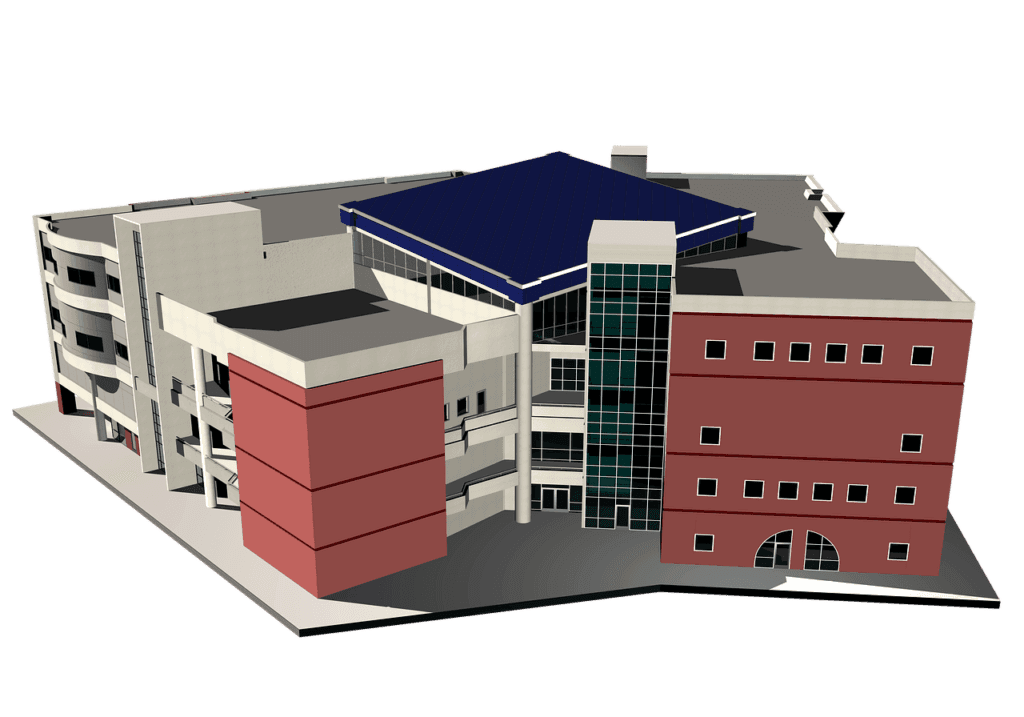Community centers play a crucial role in disaster preparedness and response. These centers provide a safe space for communities to gather, receive important information, and coordinate efforts during times of crisis. With their ability to serve as communication hubs and provide vital resources, community centers act as a lifeline for individuals and families affected by disasters. From offering emergency shelters to organizing relief efforts, these centers are instrumental in minimizing the impact of disasters and ensuring the well-being of communities. Understanding the vital role community centers play in disaster management is essential for effective preparedness and response strategies.

Table of Contents
Importance of Community Centers in Disaster Preparedness
Disasters can strike at any moment, leaving communities vulnerable and in need of support. Community centers play a crucial role in disaster preparedness by providing a central hub for information, access to emergency supplies, and facilitating collaboration and coordination among various organizations and community members.
Creating a central hub for information
During a disaster, accurate and timely information is crucial for making informed decisions and taking necessary actions. Community centers serve as a reliable source of information, providing updates on evacuation plans, emergency contact numbers, and other essential details. By acting as a communication hub, community centers ensure that residents have access to trustworthy information that can potentially save lives.
Providing access to emergency supplies
In times of disaster, access to emergency supplies is critical for survival. Community centers are equipped with stockpiles of essential items such as food, water, blankets, and medical supplies. These supplies are pre-positioned and ready for immediate distribution when a disaster strikes. By providing immediate access to emergency supplies, community centers help meet the basic needs of affected individuals and ensure their well-being during challenging times.
Facilitating collaboration and coordination
Disaster response efforts require a high level of coordination among various agencies, organizations, and community members. Community centers serve as a central meeting point, bringing together key stakeholders involved in disaster preparedness and response. Through collaborative efforts, community centers support effective coordination, ensuring efficient use of resources and avoiding duplication of efforts. By fostering partnerships and creating a space for collaboration, community centers enhance the overall effectiveness of disaster response efforts.
Supporting the Community During Disasters
When disaster strikes, community centers play a vital role in supporting the affected individuals and providing necessary services and resources to help them recover.
Offering temporary shelter and housing
In the aftermath of a disaster, many individuals may find themselves homeless and in need of shelter. Community centers often serve as temporary shelters, providing a safe place for individuals and families to stay until they can find more permanent housing solutions. These centers offer essential facilities such as beds, bathrooms, and communal areas to provide comfort and security for those affected by the disaster.
Providing essential services and resources
Community centers are equipped to offer a range of essential services during and after a disaster. These services may include medical assistance, counseling, and emotional support, ensuring that affected individuals receive the care they need. Additionally, community centers may offer services such as food distribution, helping to address the immediate needs of individuals who may have lost access to regular food sources.
Offering counseling and emotional support
Disasters can have a significant impact on the mental health and well-being of individuals and communities. Community centers often provide counseling and emotional support services, helping individuals cope with the trauma and stress associated with disaster events. Trained professionals and volunteers offer a safe space for individuals to share their experiences, process their emotions, and receive guidance on how to rebuild their lives in the aftermath of a disaster.
Training and Education for Disaster Preparedness
To enhance community resilience, community centers play a critical role in providing training and education initiatives that focus on disaster preparedness.
Conducting disaster preparedness workshops
Community centers organize workshops and training sessions to educate community members on disaster preparedness. These workshops cover topics such as developing emergency plans, creating disaster supply kits, and understanding evacuation procedures. By empowering individuals with knowledge and skills, community centers help build a proactive and prepared community that can effectively respond to emergencies.
Providing CPR and first aid training
In times of disaster, immediate medical care can save lives. Community centers often offer CPR and first aid training courses to community members. These courses equip individuals with life-saving skills, enabling them to provide immediate assistance to injured individuals before professional help arrives. By ensuring that community members are trained in basic medical techniques, community centers contribute to the overall resilience of the community and reduce the potential impact of disasters.
Educating the community on evacuation plans
During emergencies, timely and effective evacuation plans can mean the difference between life and death. Community centers take the lead in educating community members about evacuation plans specific to their area. By providing clear instructions, mapping out evacuation routes, and conducting drills, community centers help ensure that individuals can safely evacuate to designated shelters or safer locations when disasters strike. This proactive approach to evacuation planning saves lives and minimizes the potential for harm during emergencies.
Strengthening Community Resilience
Community centers are instrumental in building and strengthening resilience within communities, promoting engagement, support networks, and community-wide emergency drills.
Fostering community engagement and involvement
For effective disaster preparedness and response, community engagement and involvement are essential. Community centers act as catalysts for community engagement, bringing together residents, local leaders, and organizations to collectively address the challenges posed by disasters. Through town hall meetings, community forums, and collaborative initiatives, community centers create a sense of belonging and ownership, encouraging everyone to actively participate in disaster preparedness efforts.
Encouraging neighborly support and networks
In times of crisis, strong neighborly support networks can provide a lifeline for individuals and communities. Community centers play a vital role in encouraging and facilitating the development of these support networks. By organizing community-building events, fostering relationships, and promoting neighborhood watch programs, community centers help establish a sense of trust and solidarity. These networks not only enhance preparedness but also act as a support system during and after disasters.
Promoting community-wide emergency drills
Practice makes perfect, and this holds true for disaster preparedness as well. Community centers organize community-wide emergency drills to test the effectiveness of emergency plans and improve response capabilities. These drills simulate disaster scenarios, allowing community members to practice evacuation procedures, communication protocols, and response actions. By conducting regular drills, community centers ensure that residents are well-prepared and can respond swiftly and confidently during actual disaster events.

Community Centers as Communication Centers
During emergencies, effective communication is essential to disseminate critical information, coordinate response efforts, and keep community members informed and safe. Community centers play a vital role in serving as communication centers.
Disseminating emergency alerts and warnings
Community centers serve as primary communication channels for disseminating emergency alerts and warnings to community members. Through various communication channels such as public address systems, text messages, and social media platforms, community centers ensure that timely warnings reach residents, enabling them to take necessary precautions and seek safety. By facilitating this critical communication process, community centers contribute to the overall safety and well-being of the community.
Providing information on disaster response efforts
In addition to warning dissemination, community centers provide regular updates on disaster response efforts. This includes information on the deployment of emergency response teams, available resources and services, and the status of relief operations. By keeping community members informed, community centers instill a sense of trust and confidence, ensuring that residents are well-informed about ongoing efforts to assist and support them during disasters.
Serving as a communication hub during emergencies
Community centers act as central hubs for communication and coordination during emergencies. They serve as focal points where community members can seek assistance, report incidents, and receive real-time updates on the evolving situation. By maintaining open lines of communication, community centers facilitate information flow between residents, emergency responders, and relevant authorities, ensuring efficient response operations and minimizing the impact of disasters on the community.
Collaboration with Local Agencies and Organizations
Community centers actively collaborate with local government agencies, healthcare providers, and non-profit organizations to enhance disaster preparedness and response capabilities.
Partnering with local government agencies
Government agencies play a critical role in disaster response and recovery. Community centers collaborate closely with these agencies to align efforts, share resources, and coordinate response operations. This collaborative approach strengthens the overall response capacity of the community, enabling swift and effective action when disasters strike. By working hand-in-hand with local government agencies, community centers ensure a unified response and optimize the utilization of available resources.
Working with healthcare providers and hospitals
In times of disaster, healthcare providers and hospitals are at the forefront of emergency response efforts. Community centers establish partnerships with these organizations to ensure seamless coordination and support. These partnerships may involve establishing medical stations within community centers, providing logistical support, and facilitating the rapid transfer of patients to medical facilities when needed. By collaborating with healthcare providers, community centers contribute to the overall medical response capacity and ensure that affected individuals receive the necessary healthcare services.
Collaborating with non-profit organizations
Non-profit organizations play a vital role in providing humanitarian assistance during and after disasters. Community centers collaborate with these organizations to leverage their expertise, resources, and networks. This partnership enables community centers to access additional resources, such as emergency relief supplies, volunteer support, and specialized services. By joining forces with non-profit organizations, community centers enhance their capabilities and effectively address the diverse needs of the community during times of crisis.

Inclusion and Accessibility in Disaster Response
Community centers prioritize inclusion and accessibility in disaster response efforts to ensure that the needs of all community members, including people with disabilities, elderly individuals, and diverse populations, are effectively addressed.
Ensuring accessibility for people with disabilities
People with disabilities may face unique challenges during a disaster. Community centers take proactive measures to ensure that their facilities and services are accessible to individuals with disabilities. This includes providing wheelchair-accessible entrances, accessible restrooms, and assistive devices like hearing aids. Community centers also collaborate with disability advocacy organizations to develop inclusive emergency plans and provide specialized assistance to individuals with disabilities during emergencies.
Addressing the needs of elderly community members
Elderly individuals are often more vulnerable during disasters due to their physical limitations, chronic health conditions, and social isolation. Community centers prioritize the specific needs of elderly community members by offering age-friendly facilities and specialized services. This may include providing transportation assistance, medical support, and socialization programs to ensure the well-being and comfort of elderly individuals during emergencies.
Catering to the needs of diverse populations
Communities consist of diverse populations with specific cultural, linguistic, and religious backgrounds. Community centers take active measures to cater to the needs of these diverse populations, ensuring that their disaster preparedness and response efforts are culturally sensitive and inclusive. By partnering with community-based organizations, religious institutions, and cultural centers, community centers develop tailored approaches that consider the unique needs, practices, and beliefs of diverse populations during disasters.
Disaster Preparedness Programs for Vulnerable Populations
Community centers develop specialized programs to address the unique needs of vulnerable populations, including children, individuals with medical conditions, and low-income communities.
Providing specialized services for children
Children are particularly vulnerable during disasters, requiring specialized care and support. Community centers develop programs that cater specifically to the needs of children, offering safe spaces, age-appropriate activities, and trauma-informed support. These programs ensure that children receive the emotional support they need and are equipped with skills to stay safe during emergencies.
Supporting individuals with medical conditions
Individuals with medical conditions often require ongoing care and access to critical medications and equipment. Community centers develop specific programs to support these individuals during disasters, ensuring the availability of medical supplies, coordination with healthcare providers, and the provision of additional medical assistance if needed. By addressing the unique needs of individuals with medical conditions, community centers contribute to their safety and overall well-being during emergencies.
Addressing the unique needs of low-income communities
Low-income communities often face increased vulnerability during disasters due to limited resources, lack of access to information, and reduced social support networks. Community centers develop programs that specifically target the needs of these communities, providing access to emergency supplies, information on available resources, and support in navigating the recovery process. By addressing the specific challenges faced by low-income communities, community centers aim to bridge the gap and reduce the disproportionate impact of disasters on these vulnerable populations.

Emergency Communication and Warning Systems
Effective emergency communication systems are vital in ensuring that residents receive timely warnings and updates during disasters. Community centers play a significant role in implementing and utilizing such systems.
Implementing effective emergency communication systems
Community centers work closely with local authorities and telecommunications providers to implement robust emergency communication systems. These systems may include sirens, loudspeakers, emergency broadcast systems, and various digital communication platforms. By ensuring the efficiency and reliability of these systems, community centers contribute to the prompt dissemination of critical information to community members, enabling them to take necessary actions to protect themselves.
Installing public address systems for community-wide alerts
Public address systems are essential in alerting and instructing residents during emergencies. Community centers often install public address systems in strategic locations within communities to ensure that alerts and instructions are heard by as many people as possible. These systems can quickly communicate evacuation orders, safety instructions, and updates, allowing community members to respond effectively and seek safety.
Utilizing technology for real-time updates and notifications
Technology plays an increasingly important role in disaster preparedness and response. Community centers utilize various technological tools and platforms to provide real-time updates and notifications to community members. This may include sending text messages, mobile applications, and social media platforms to disseminate information quickly and efficiently. By harnessing the power of technology, community centers ensure that residents are well-informed and can make informed decisions during emergencies.
Lessons Learned from Previous Disasters
Community centers continuously analyze the successes and challenges of previous disaster responses to improve their preparedness and response capabilities.
Analyzing successes and challenges of past responses
After every disaster, community centers conduct thorough assessments to understand the successes and challenges of their response efforts. This includes evaluating communication systems, resource management, coordination with relevant stakeholders, and community engagement strategies. By critically analyzing past responses, community centers can identify areas of improvement and implement targeted measures to enhance their overall preparedness.
Improving community center preparedness based on experience
Lessons learned from previous disasters are invaluable in improving the preparedness of community centers. Based on the analysis of past responses, community centers update and enhance their emergency plans, review and revise communication protocols, and strengthen their coordination mechanisms. By incorporating lessons learned into their preparedness efforts, community centers strive to operate more efficiently and effectively during future disasters.
Adapting strategies to address evolving disaster risks
Disaster risks evolve over time, and community centers must adapt their strategies and approaches to effectively respond to these changing risks. By staying updated on the latest risk assessments and disaster management practices, community centers can proactively modify their preparedness measures. This may include revising evacuation plans, enhancing communication systems, or establishing new partnerships to address emerging risks. By being adaptable and responsive to changing conditions, community centers ensure that their services remain relevant and effective in protecting their communities.


